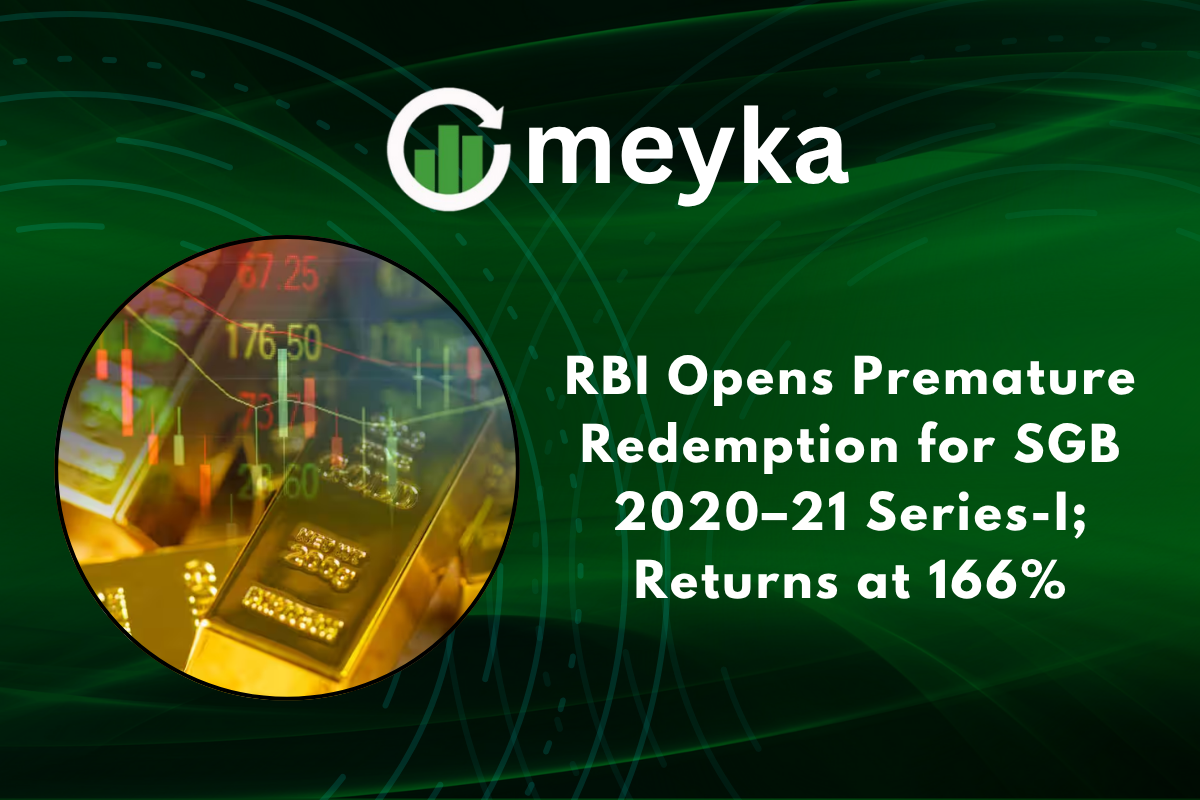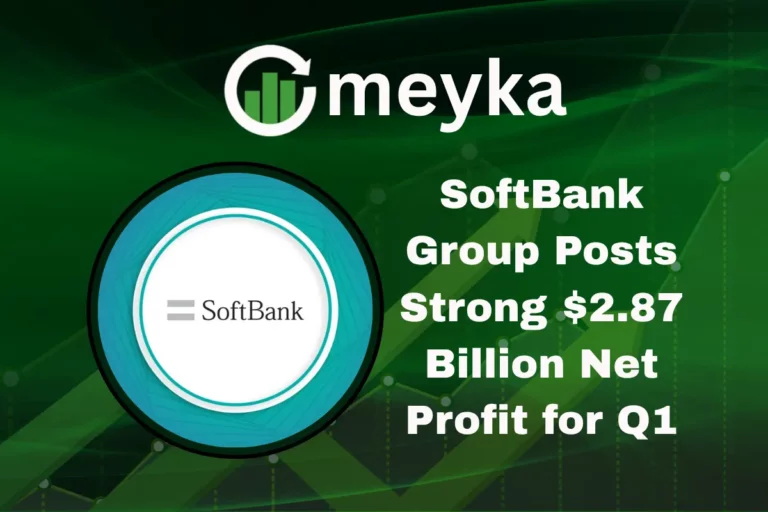RBI Opens Premature Redemption for SGB 2020–21 Series-I; Returns at 166%
The RBI has opened an early exit window for the Sovereign Gold Bond (SGB) 2020–21 Series-I, setting the redemption price at ₹12,198 per gram. Investors who bought this tranche five years ago now have the option to redeem early and can realise an around 166% gain over the issue price, excluding interest.
RBI: What the announcement says and the key dates
What did the RBI announce?
The central bank announced that holders of the SGB 2020–21 Series-I can opt for premature redemption from 28 October 2025, the fifth anniversary of the issue. The redemption price is calculated using the simple average of IBJA’s closing gold rates for the three preceding business days.
Why did RBI open this window now? Premature redemption is allowed by RBI rules only after five years from the date of issue. This tranche reached that milestone in late October, so RBI published the fixed redemption price and opened the formal window.
RBI: How the ₹12,198 price and 166% returns are worked out
How is the redemption price calculated?
RBI uses the simple average closing price of 999-purity gold published by the India Bullion & Jewellers Association (IBJA) for the three business days before the redemption date. That average produced the ₹12,198 per gram figure for this tranche.
What does 166% returns mean?
The SGB was sold to online applicants at ₹4,589 per gram (offline buyers paid about ₹4,639). The simple absolute gain is the difference between ₹12,198 and the issue price, around ₹7,609 on a ₹4,589 buy, which works out to approximately 166% (excluding the semi-annual 2.5% interest the bond also paid).
RBI: Who can redeem and how to apply
Who is eligible to redeem early?
Only holders of SGB 2020–21 Series-I who completed the five-year holding period are eligible for premature redemption on the specified date. Retail investors who bought the series via banks, post offices, or brokers can take part.
How do investors redeem their bonds?
Investors must contact the bank, post office, or the Stock Holding Corporation of India Ltd. (SHCIL) that acted as the agent at purchase. Redemption requests are processed by the receiving offices or depositories (NSDL/CDSL) as per RBI instructions. Keep your holding certificate or demat details ready.
RBI: Interest, tax, and practical payout details
What about interest and taxation?
SGBs pay 2.5% annual interest, credited semi-annually on the nominal value, in addition to capital gains from gold. For investors who redeem early, the interest already paid adds to total returns, but the capital gain treatment for tax depends on whether the bonds were held in physical certificate form or demat, long-term capital gains rules, and tax on interest may apply. Check with your tax advisor for personal tax treatment.
Is the payout immediate? Payments are processed by the receiving offices, banks, and the SHCIL will credit the redemption amount to the investor’s account after RBI clearance and administrative checks. Timelines vary by agent and documentation.
RBI: Historical context: how SGB redemptions have worked
How does this compare to past windows?
RBI runs scheduled redemption windows as SGB tranches reach their five-year point. Earlier 2025 redemptions rewarded investors with large absolute gains; some series showed returns of more than 100% to over 200% depending on issue price and gold’s run. RBI’s consistent methodology (IBJA average and a 2.5% coupon) makes these exits transparent.
Did RBI do this before? Yes, several 2017–2020 tranches had premature redemption options once the five-year lock ended, and RBI followed the same valuation method each time.
RBI: Why the returns look so large: gold price trend 2020 vs 2025
Why such big gains over five years?
Gold prices rose strongly between 2020 and 2025 due to global inflationary pressures, geopolitical uncertainty, and investor demand for safe havens. That surge lifted SGB values sharply above their issue prices set in 2020.
How did SGB performance compare to other gold options? Over the five years, SGBs often outperformed physical coins and jewellery on a CAGR basis and delivered the added benefit of the fixed interest component and paper-based convenience. Reports show SGB returns beating several other gold instruments in many tranches.
RBI: Investor sentiment and economic significance
What are investors saying?
Many retail holders welcome the RBI window as an opportunity to book strong gains, especially those who used SGBs as a long-term, low-risk gold exposure.
Financial commentators emphasise SGBs’ tax efficiency versus physical gold and the ease of cashing out via banks and SHCIL.
Why does RBI offer SGBs at all? SGBs help channel household gold savings into government securities, reducing the demand for physical imports and easing balance-of-payments pressure. They are part of the RBI and government strategy to broaden investment choices and reduce physical gold hoarding.
RBI: What investors should check before redeeming
A short checklist
- Confirm your holding with the bank, SHCIL, or depository.
- Check the exact issue price you paid (online vs offline rates differ).
- Understand tax and interest implications; consult a tax adviser if unsure.
RBI: Official and media response
The announcement was widely picked up by financial media and markets. For example, Statesman reported the RBI price notice on social media as investors reacted to the strong returns. See The Statesman post:
RBI: Want to learn more? Watch this explainer
For a short walkthrough of the premature redemption process and what the 166% return means, there are helpful explainer videos from business media. (Example: Moneycontrol / NDTV explainers on SGB redemption.)
Watching a 3–6 minute explainer helps investors prepare their documents and understand payout timelines.
RBI: Final thoughts: What this means for Indian investors
The RBI decision gives many investors a clear, low-risk chance to lock in a large gain without handling physical gold. For those who still want exposure, SGBs remain an attractive, tax-efficient route, but every investor should weigh tax and liquidity needs before redeeming.
As RBI offers this exit, it underlines the policy role of SGBs in India’s financial strategy and gives households a trusted way to monetise price gains.
Conclusion
The RBI’s premature redemption for SGB 2020–21 Series-I, at ₹12,198 per gram, hands investors an exceptional near-term outcome: roughly 166% growth on the issue price plus valued interest payments. This move demonstrates how SGBs can offer both safety and strong upside when gold trends turn favorable.
As the RBI opens this window, thousands of Indian investors stand to benefit from one of the best-performing financial instruments in recent years.
FAQ’S
The RBI has announced a premature redemption window for Sovereign Gold Bond (SGB) 2020–21 Series-I on October 28, 2025. Eligible investors can redeem their bonds early at the fixed price of ₹12,198 per gram.
The bonds were issued at ₹4,639 per gram in May 2020. With the RBI’s redemption price now set at ₹12,198, investors earned about 166% total return over five years, including price appreciation and interest income.
Bondholders who have completed five years from the issue date can apply for early redemption. Requests can be made through banks, post offices, or SHCIL (Stock Holding Corporation of India Ltd).
Investors must submit a redemption request form to their issuing bank, post office, or SHCIL branch. The RBI will credit the redemption amount and final interest directly to the investor’s linked bank account.
As per RBI and Income Tax rules, capital gains from SGB redemption are exempt from tax for individual investors. However, the annual interest (2.5%) earned on the bonds is taxable as income.
Disclaimer
The content shared by Meyka AI PTY LTD is solely for research and informational purposes. Meyka is not a financial advisory service, and the information provided should not be considered investment or trading advice.






